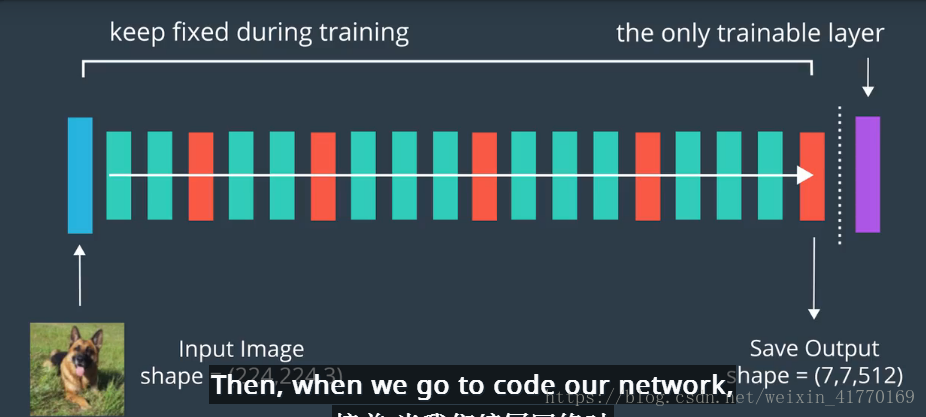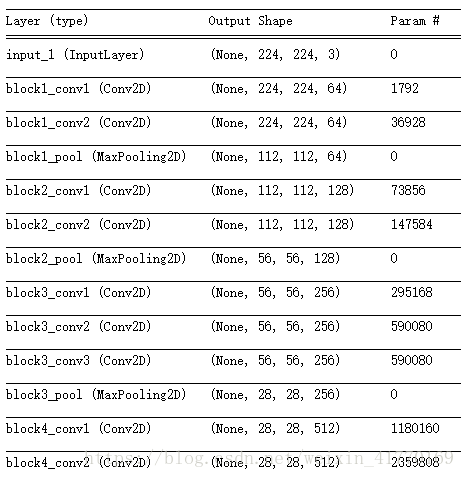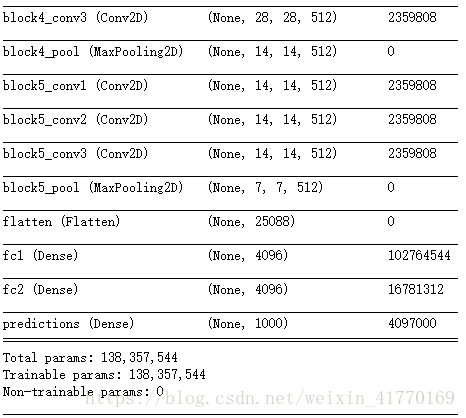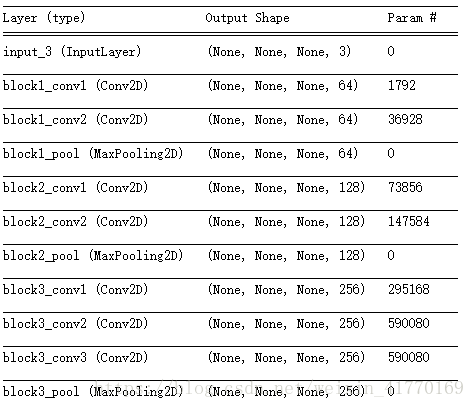一、bottleneck特征说明

将所有图像穿过(VGG16去掉最后全连接层)得到输出,作为新的输入。
二、bottleneck特征提取代码
1、加载预处理图像库
from keras.applications.vgg16 import preprocess_input
from keras.preprocessing import image
import numpy as np
import glob
img_paths = glob.glob("images-bottleneck/*.jpg")
def path_to_tensor(img_path):
# loads RGB image as PIL.Image.Image type
img = image.load_img(img_path, target_size=(224, 224))
# convert PIL.Image.Image type to 3D tensor with shape (224, 224, 3)
x = image.img_to_array(img)
# convert 3D tensor to 4D tensor with shape (1, 224, 224, 3) and return 4D tensor
return np.expand_dims(x, axis=0)
def paths_to_tensor(img_paths):
list_of_tensors = [path_to_tensor(img_path) for img_path in img_paths]
return np.vstack(list_of_tensors)
# calculate the image input. you will learn more about how this works the project!
img_input = preprocess_input(paths_to_tensor(img_paths))
print(img_input.shape)

2、导入VGG16

from keras.applications.vgg16 import VGG16
model = VGG16()
model.summary()


model.predict(img_input).shape

3、导入VGG16,但去掉最后3个全连接层

fromfrom keras.applications.vgg16keras.a import VGG16
model = VGG16(include_top=False)
model.summary()


4、最大池化层的输出
print(model.predict(img_input).shape)







 本文介绍如何使用VGG16模型去除最后的全连接层来提取图像的瓶颈特征。通过具体步骤演示了从加载预处理图像到利用修改后的VGG16模型进行预测的过程。
本文介绍如何使用VGG16模型去除最后的全连接层来提取图像的瓶颈特征。通过具体步骤演示了从加载预处理图像到利用修改后的VGG16模型进行预测的过程。

















 被折叠的 条评论
为什么被折叠?
被折叠的 条评论
为什么被折叠?








